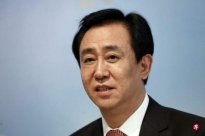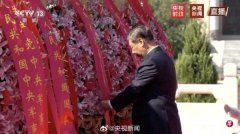China began to launch the Mid -Autumn Festival National Day holiday on Friday (September 29). Japanese media reported that Japan, one of the popular tourist destinations in the past, does not seem to be affected by the problem of discharge of Fukushima nuclear waste water.The Japanese airline flight to Japan is basically full of Chinese passengers.
According to the Kyodo News Agency, the 29th on the first day of the long holiday coincides with the Mid -Autumn Festival, the Beijing Capital International Airport has been filled with team tourists going to domestic and foreign tourists since the morning.Long dragons were also lined up in front of the check -in counter to Tokyo Haneda Airport.
A 30 -year -old Chinese man said in an interview that he intends to go to Tokyo and enjoy Japanese meals with friends.Regarding nuclear waste water, he said that he could rest assured and wait for the sashimi after eating sashimi.
Japanese airline giants said, "China’ s flight appointment rate for departure to Japan is very high, and no impact on the problem of water treatment. "On the popular travel destination list during the long vacation during the long vacation of Chinese search engines, Japan surpassed Thailand, South Korea and Malaysia, ranking first.
Takahashi Ichiro Takahashi Takada, the Japanese Tourism Agency, said at a press conference that the current impact of nuclear waste water issues on visitors to Japan is limited.
After the start of Fukushima Nuclear Water Water, the Chinese media reported that due to the influence of nuclear waste water discharge, the tourist appointment in Japan was canceled successively, and the popularity of tourism in Japan dropped sharply.
The first round of the Fukushima Nuclear Power Station ended on September 11, and a total of 7,788 metric tons of nuclear treatment water was discharged to the Pacific Ocean.
Tokyo Electric Power Company announced on Thursday (28th) that the Fukushima First Nuclear Power Station will launch the second round of nuclear treatment water programs next week.It is reported that the total amount of nuclear treatment water in the second round of emissions is expected to be around 7,800 tons, and the discharge time is about 17 days.



